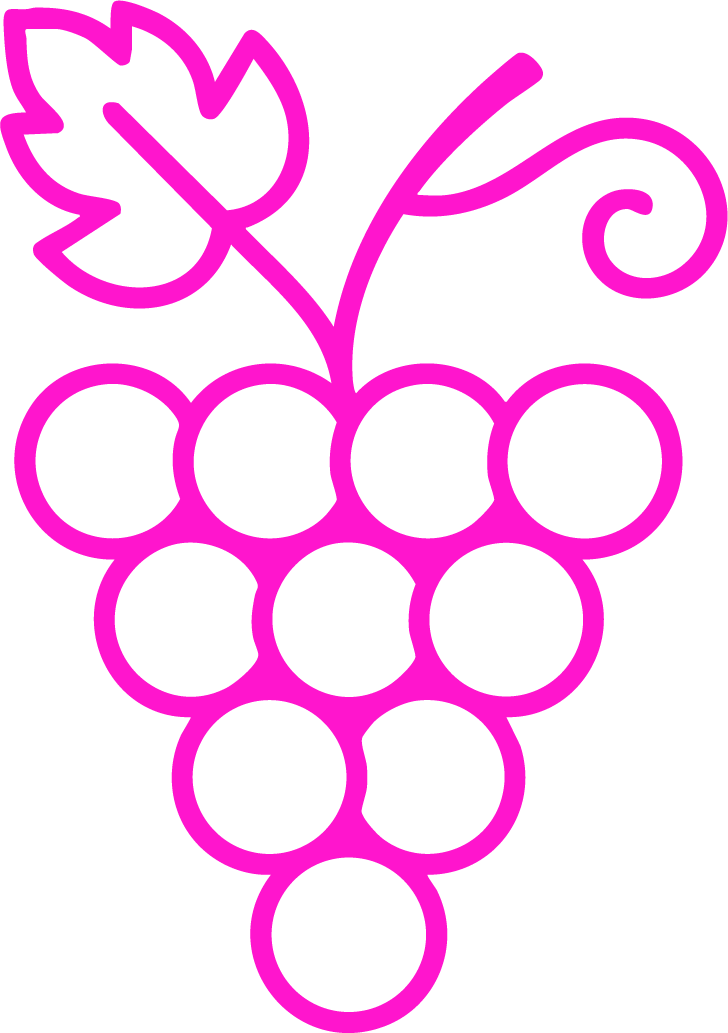Sauvignon Blanc
🔊 Pronunciation: saw-vin-yawn blonk
🔍 Quick Summary
A zesty white grape known for its electric acidity, green aromatics, and global versatility — from Loire Valley elegance to Marlborough zing.
📜 History
Origin: Born in the 18th century in the Loire Valley, France — likely native, with debated ancestry possibly linked to Savagnin and Chenin Blanc.
Loire’s wild child: The name comes from sauvage (“wild”), referencing its vigorous growth in Sancerre and Pouilly-Fumé.
Paired to greatness: Naturally crossed with Cabernet Franc to create Cabernet Sauvignon in Bordeaux.
New World stardom: Gained fame in the 1980s with Marlborough, New Zealand’s wildly aromatic style.
Reputation rescued: Once viewed as overly grassy or thin; reimagined through oak aging and skin contact by producers in California and Bordeaux.
🧠 What to Know
Sauvignon Blanc is a globe-trotting grape with a split personality — lean and mineral in some places, bold and tropical in others.
Signature acid snap: Always bright and zippy, even in warmer climates.
Green spectrum aromas: Think bell pepper, gooseberry, lime, and crushed herbs.
Two style camps: Crisp and unoaked (Loire, NZ) vs. creamy and oaked (Bordeaux Blanc, Napa).
Quick to market: Rarely aged long; meant to be enjoyed young and fresh.
Blending partner: Often blended with Sémillon for complexity and ageability.
📍 Where It’s Found
Sauvignon Blanc thrives globally, adapting its personality to soil and sun.
🇫🇷 Loire Valley, France – Limestone + Cool climate = Mineral, citrus-driven wines
Cool | 68–75°F (20–24°C) avg daytime highs
🇫🇷 Bordeaux, France – Gravel + Moderate climate = Structured, often oaked blends
Moderate | 70–78°F (21–26°C)
🇳🇿 Marlborough, New Zealand – Alluvial soils + Cool climate = Explosive tropical and herbal notes
Cool | 65–72°F (18–22°C)
🇺🇸 California, USA – Diverse soils + Warm climate = Rounder, riper fruit styles
Warm | 78–90°F (25–32°C)
🇺🇸 Chile (Casablanca Valley) – Granite + Coastal cool = Crisp, citrusy Sauvignon with finesse
Cool | 68–76°F (20–24°C)
👅 Flavor & Style
Aromatically intense and refreshingly sharp — from grassy to passionfruit-rich depending on where it’s grown.
Color: Pale straw to light gold
Aromas & Flavors:
Primary: Lime, gooseberry, green apple, passionfruit, fresh herbs
Secondary: Leesy creaminess, light oak (if used), subtle vanilla
Tertiary: Dried hay, honeyed notes in aged examples
Structure:
Body: Light to medium
Tannin: None
Acidity: High
Alcohol: Moderate (12–14.5%)
🛠 Winemaking Notes
Sauvignon Blanc can be a purist’s grape or a winemaker’s playground.
Stainless steel tanks: Preserve freshness and green aromatics.
Oak fermentation: Adds creaminess and spice (especially in Bordeaux Blanc).
Lees stirring: Enhances texture and adds savory depth.
Blending: Often with Sémillon for weight, especially in Bordeaux and Australia.
🍽 Food Pairing Ideas
Pairs well with zesty, herbal, and citrus-based dishes that match its high acidity.
Savory: Goat cheese salad, grilled asparagus, oysters on the half shell
Cheese: Chèvre, feta, pecorino
Unexpected: Thai green curry, green shakshuka, jalapeño hummus
🔗 Related Topics to Explore
🍇 Sémillon – Softens and ages Sauvignon Blanc blends
🌍 Pyrazines – The molecule behind bell pepper and herb notes
🌱 High Acidity Wines – Food-friendly and crisp by design
⚗️ Citrus Aromatics – Common across cool-climate white wines



